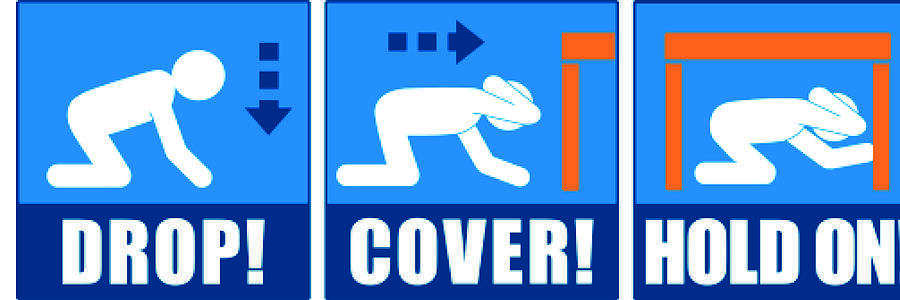Missouri Earthquake Awareness Month focuses on earthquake risk and disaster preparedness
JEFFERSON CITY – February has been proclaimed as Earthquake Awareness Month in Missouri by Gov. Eric R. Greitens, due to recognition of the earthquake hazard posed by the New Madrid Seismic Zone (NMSZ), the most active seismic area east of the Rocky Mountains.
The NMSZ, centered in southeast Missouri, experiences about 200 tiny earthquakes a year, measurable by seismograph but not felt by humans. In a two month period from 1811-12, this fault system produced at least three of the largest earthquakes ever experienced in the continental U.S.
Each February, Missourians are reminded to plan and prepare for how a major earthquake might impact them and their families.
“Earthquake Awareness Month reminds us that it’s not just the West Coast that could be affected by a major earthquake,” said Ron Walker, director of the State Emergency Management Agency. “All of us who live in Missouri should think about what we would do to respond, particularly in southeast Missouri, where the greatest risk is centered. People should consider whether to invest in earthquake insurance, prepare an emergency kit, and know how they’d protect themselves when an earthquake hit.”
When shaking starts, the best way to stay safe is to “Drop, Cover and Hold On” to protect yourself from falling debris, which is the most common source of injuries during earthquakes in developed nations with modern building standards.

In MOST situations, you will reduce your chance of injury if you:
DROP where you are, onto your hands and knees. This position protects you from
being knocked down and also allows you to stay low and crawl to shelter if nearby.
COVER your head and neck with one arm and hand
• If a sturdy table or desk is nearby, crawl underneath it for shelter
• If no shelter is nearby, crawl next to an interior wall (away from windows)
• Stay on your knees; bend over to protect vital organs
HOLD ON until the shaking stops.
• Under shelter: hold on to it with one hand; be ready to move with your
shelter if it shifts
• No shelter: hold on to your head and neck with both arms and hands.
If there is no table or desk near you, drop to the ground and then if possible move
to an inside corner of the room. Be in a crawling position to protect your vital
organs and be ready to move if necessary, and cover your head and neck with
your hands and arms.
Do not move to another location or outside. Earthquakes occur without any
warning and may be so violent that you cannot run or crawl. You are more likely
to be injured if you try to move around during strong shaking. Also, you will never
know if the initial jolt will turn out to be start of the big one…and that’s why you
should always Drop, Cover, and Hold On immediately!
In putting together an emergency kit, select items that would help sustain your family for at least three days without power and water service due to an emergency. The kit should include a flashlight and battery-powered radio and extra batteries; bottled water; canned and dried food like tuna fish, peanut butter, crackers and energy bars, along with a manual can opener; anti-bacterial wipes; and a first-aid kit. Additional information on emergency planning is available here.
There are other simple steps you can take if you live in or near the New Madrid Seismic Zone:
· Bolt bookcases to wall studs, install strong latches on cupboards and strap your home's water heater to wall studs – if it tips over it could start a fire or gas leak, and you could lose a valuable source of water.
· Secure overhead lighting fixtures and move heavy objects from high shelves to lower ones. Many injuries in an earthquake are caused by this type of falling debris.
· Develop a family communication plan. Identify a relative living at least 100 miles away; everyone can call to "check in" to tell family you're safe.
· Know how to turn off your gas and water.
· Find out if your house is covered for earthquake damage. Most homeowner insurance does not include earthquake coverage; it must be purchased separately. Information about earthquake insurance in Missouri is available here.
Many more resources for families, schools and businesses are available on SEMA's Earthquake Preparedness Web page. Included are fact sheets, interactive maps and informational videos that show what to do in the event of an earthquake. Go to www.sema.dps.mo.gov/earthquake_preparedness.

